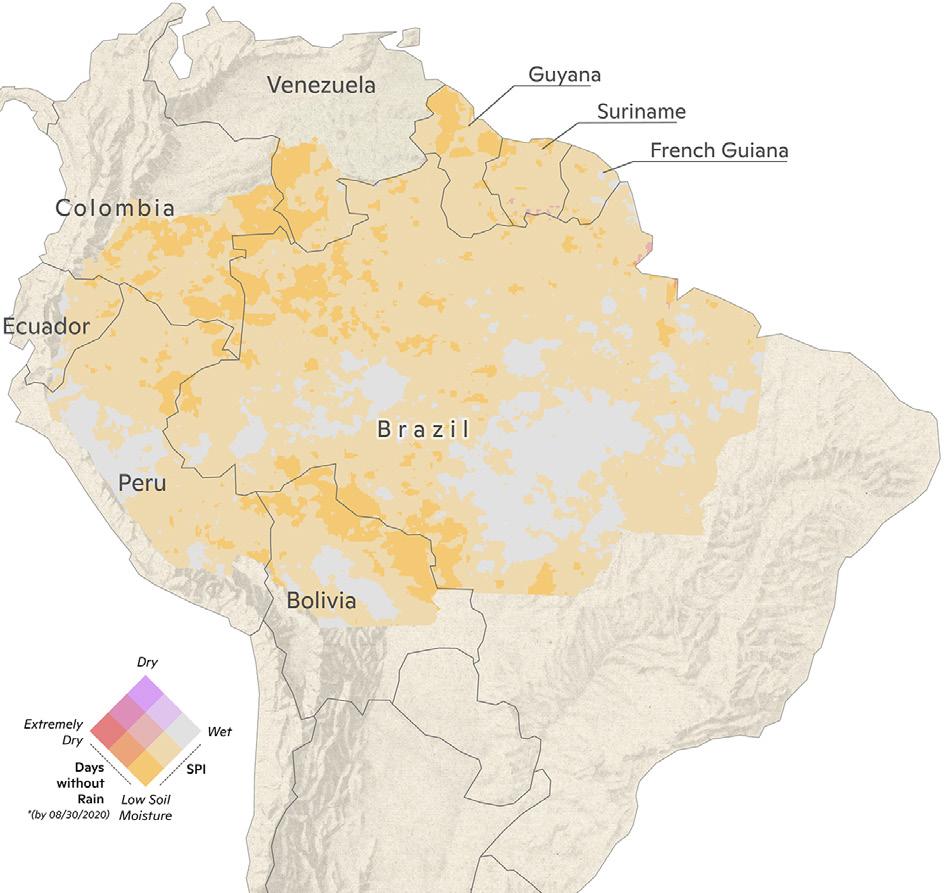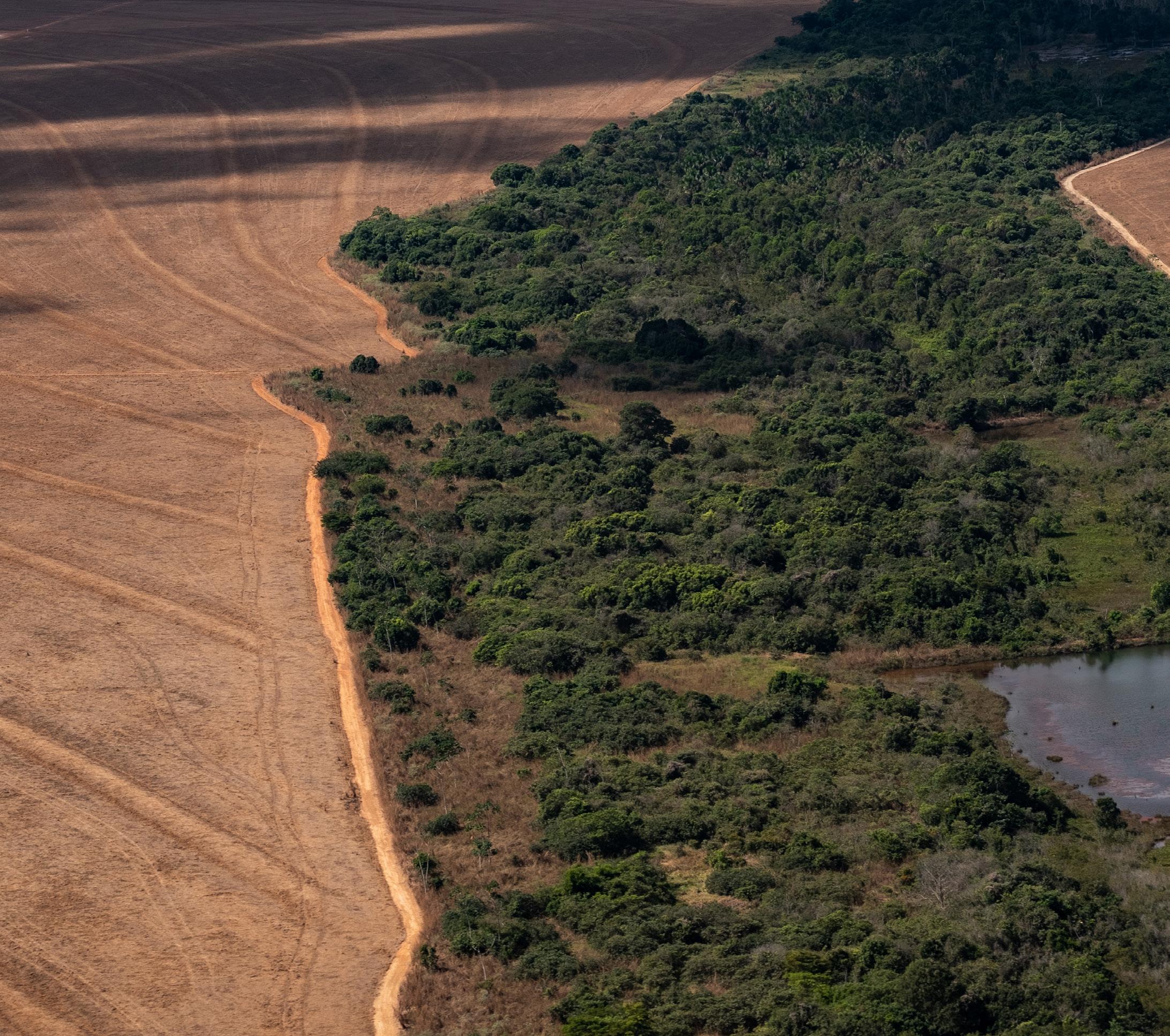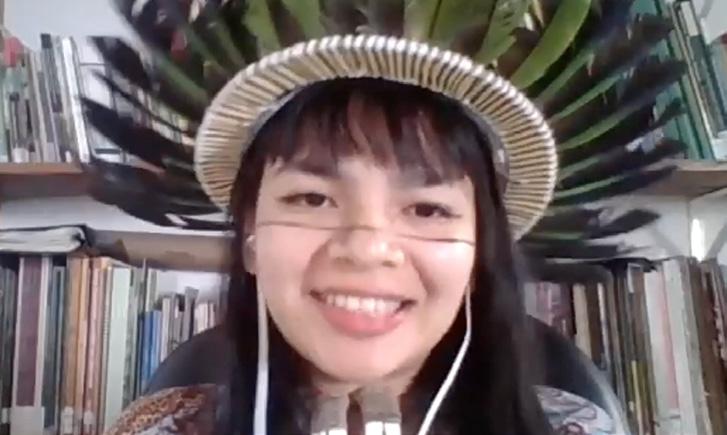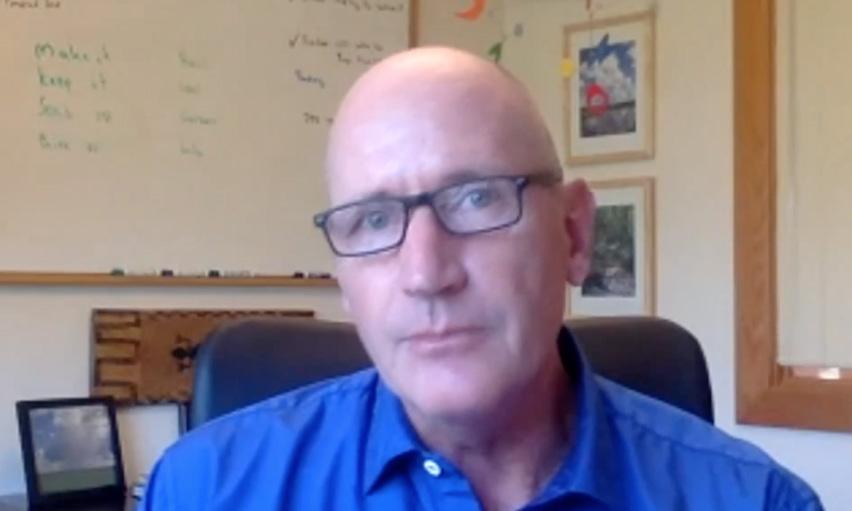
7 minute read
As Amazon deforestation worsens, Woodwell-IPAM partnership builds strength
Miles Grant Director of Publications & Media Relations
After 2019 saw the worst year for Amazon deforestation and fires in a decade, scientists at Woodwell Climate Research Center and IPAM Amazônia have made a new push to end deforestation and reduce associated fires. In 2020, we initiated a landmark effort to track Amazon destruction as it happens, launched an innovative mechanism to encourage rural farmers and ranchers to conserve Amazon forest, and brought international attention to Amazon conservation with a Climate Week NYC event.
Woodwell and IPAM have partnered for 25 years to study the Amazon, work with local governments and Indigenous groups to help sustain it, and examine the climatological and ecological benefits of avoiding deforestation and promoting sustainable agriculture. Learning how to stop deforestation and assist forest regrowth can not only help tropical countries achieve their climate goals by maintaining and restoring carbon stocks in protected forests, Indigenous reserves, and private properties, it can also protect biodiversity and forest ecosystem services.
A watchful eye on the Amazon The grim spike in Amazon forest-clearing in 2019 sparked renewed efforts to monitor the Amazon and work to stop the destruction. While fires intentionally set to clear land for farming and ranching typically peak in August and September, the trees are cut down months beforehand and left to dry. Woodwell and IPAM scientists began meeting months in advance to determine a strategy to bring attention to this year’s deforestation data and its connection to global climate change.
The resulting monthly joint analysis—the Amazon Deforestation and Fire Update—revealed that 8,550 km2 of Amazon was lost from January to October 2020. Deforestation rates actually exceeded 2019 levels for the first six months of the year and remained well above the long-term average through the summer. While the vast majority of that deforestation took place on unprotected lands—either private properties or undesignated lands—illegal cutting on protected lands rose to account for 17% of deforestation.
“This data shows a second consecutive year of rising deforestation and fires in the Brazilian Amazon, reversing what had been a decade-long trend of relatively low deforestation. We can look at this data and see where the deforestation is happening, and the majority of it is illegal—people deforesting without permits on their land or stealing land from unprotected areas,” said Dr. Michael Coe, Tropics Program Director at Woodwell Climate Research Center. “Brazil’s government has said the right things when it comes to banning fires during the dry season, but these numbers show much more needs to be done when it comes to enforcement.”
All carbon stored in the cut trees will enter the atmosphere sooner or later. In this case, the carbon dioxide emissions committed to the atmosphere as a result of forest clearing are expected to be roughly 288 million metric tons—equivalent to the annual emissions of 62 million cars, and accounting for about half of Brazil’s annual total CO2 emissions.
The data also showed fires continued to escalate despite a fire ban announced by the Bolsonaro administration in early July. And a novel analysis of precipitation data revealed extraordinarily dry climate conditions across much of the Amazon basin, raising concern about the potential for intentionally set fires to escape and cause additional forest degradation.
“When the Amazon burns, it not only creates carbon emissions, but also intense air pollution that exacerbates the public health crisis at a time when Brazil is seeing some of the worst rates of COVID-19 infection in the world,” said Dr. Ane Alencar, Director of Science at IPAM Amazônia.
Previous page, next page: photos by Paulo Brando Right: top and center maps by Greg Fiske, bottom map by Carl Churchill



Preserving privately-owned forest Because of the range of lands on which forest can be found, there is no one-size-fits-all policy that can stop deforestation. By working collaboratively with stakeholders, Woodwell and IPAM have developed strategies for addressing the needs and motivations of both large and small agricultural producers, Indigenous landholders, and lands without any government designation. Now, in conjunction with the Environmental Defense Fund, we have launched a new program to encourage rural producers in the Brazilian Amazon to preserve forests on their land that could otherwise be legally deforested.

The CONSERV initiative began in Brazil’s Mato Grosso State with seven 30-month contracts encompassing 6,500 hectares of forest. Producers who join the initiative are paid every six months, after monitoring by IPAM verifies that protected forest has not been disturbed. Before signing the contract, IPAM analyzes the rural producer, its associates, and the property’s status, including the preserved area, land documentation, and environmental records. The monitoring is continuous during the contract period, along with satellite monitoring and field visits to guarantee that the forests are, in fact, protected.
In coming months, CONSERV aims to sign up to 30 more contracts in pre-chosen municipalities, achieving a total coverage area of 15,000 to 20,000 hectares. The payments made to farmers will continue though the end of 2022 and are generated from donations from the Norwegian and Dutch Embassies. The plan is to expand the program in the future based on private financing, not donations.
“Our goal is to scale CONSERV up to become a business model for conservation of private forests in Brazil,” said André Guimarães, IPAM Executive Director and a member of Woodwell Climate’s board of directors.


A Global Spotlight The CONSERV program is one example of the type of cooperative conservation efforts highlighted at a Climate Week NYC webinar hosted by Woodwell Climate and IPAM Amazônia. In addition to IPAM’s André Guimarães and Drs. Michael Coe and Marcia Macedo from Woodwell, the event included Indigenous activist Walelasoetxeig Paiter Bandeira Suruí, small farmer and entrepreneur Felisbela Maria Costa Santos, and Brazilian Agribusiness Association Chairman Marcello Brito. The webinar highlighted the specific needs of each stakeholder group while advocating for a common goal of reducing deforestation.


Assistance from Woodwell and IPAM scientists has proven economically advantageous for small farmers, who have received technological support and guidance to increase both the output and sustainability of their businesses.
“We were working without assistance, and didn’t even know where to start, so IPAM brought technical assistance to all farmers in the vicinity of the Transamazon highway,” said Felisbela Maria Costa Santos. “With the arrival of IPAM, the region became a big success. IPAM brought renewal, and a new kind of agriculture. They brought financial support, but more than that they brought us the knowledge we have today.”
Woodwell Climate and IPAM Amazônia scientists not only bring technical knowledge to farmers in the region but also support sustained action against climate change spearheaded by organizations such as Associação Kanindé, an Indigenous
Above: Climate Week NYC webinar presenters and panelists (top row) André Guimarães, Marcia Macedo, Michael Coe, (bottom row) Felisbela Maria Costa Santos, Walelasoetxeig Paiter Surui, Marcello Brito Next page: Forest fire haze seen over the forest at Tanguro Ranch in Mato Grasso, Brazil. / photo by Leandro Maracahipes, IPAM association that supports communities in Rondonia state, Brazil. Across the Amazon, illegal invasions have led to land clearing and burning within Indigenous territory.


“We have been fighting this fight for 500 years. We will not stop now. We will not give up now. Our hope is that more people will join us in the fight. That they understand the importance of standing forests. That they understand the importance of protecting the rights of Indigenous people—and Indigenous people themselves,” Walela Suruí, a law student and Indigenous activist of the Paiter Suruí people, told the Climate Week NYC event. “I want to take the opportunity to ask those of you watching to join with these communities—not only Indigenous people but all communities who fight for standing forests, and who understand its importance to people that live there and to the world.”
Shortly after the Climate Week NYC event, Woodwell Climate’s Dr. Marcia Macedo and policy expert and activist Valéria Paye Pereira of the Kaxuyana people echoed the call for respecting Indigenous knowledge and upholding Indigenous land rights in a co-written opinion piece in the New York Times.
“The future of tropical forests, and the future global climate, are indelibly tied up in guaranteeing the rights of Amazon Indigenous people to their land and livelihoods,” they wrote. “Defending their territories protects their social and cultural rights. But it also conserves natural ecosystems that are critical for the well-being of all people.”
WATCH
The Climate Week NYC webinar, A Plan to End Deforestation in the Amazon, is available to watch on our website at: woodwellclimate.org/stories/video










